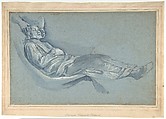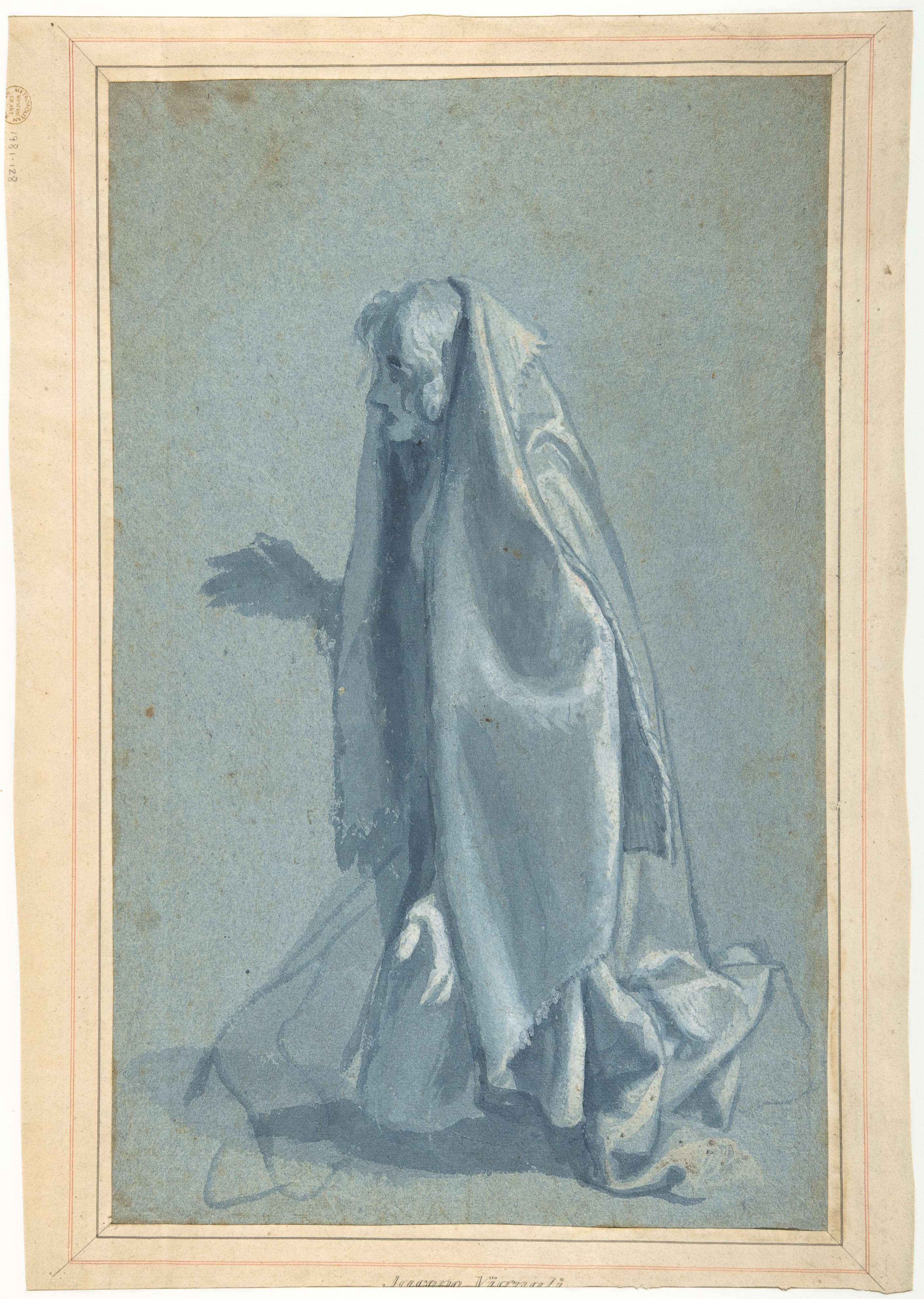Study for a Male Figure Lowered into a Grave (recto); Kneeling Female Figure in Profile to Left (verso)
Cigoli (Ludovico Cardi) Italian
Not on view
The figures on both recto and verso are studied for the Burial of Saint Paul painted by Cigoli for the apse of the Basilica of San Paolo fuori le Mura, Rome. The painting was commissioned in 1606-1607 and, though unfinished at Cigoli's death, it was placed in the apse of the Basilica where it remained until the destructive fire of 1823. The painting, considered by Cigoli's contemporaries to be one of his masterpieces, is documented in a group of preparatory studies preserved in the Gabinetto Disegni e Stampe degli Uffizi, Florence (see: Miles Chappell in Disegni dei toscani a Roma, 1580-1620, Florence 1979, nos. 98-103).
On the recto, a studio assistant reclining in a hammock (?) is studied for the figure of Saint Paul being lowered into his tomb. The two hands at upper left indicate the action of reuniting Saint Paul's head with his body at the moment of burial (the Apostle was beheaded), while the hand indicated below the figure's knees is intended for one of the bearers of the corpse. The kneeling figure on the verso is a Roman matron who assists devoutly at the interment.In style and in technique (blue wash on blue paper) the drawing is characteristic of the draughtsmanship of the mature Cigoli, and the mistaken old attribution to Jacopo Vignali (annotated on the mount) can perhaps be explained by the preponderant influence of Cigoli on the work of this Florentine artist of the following generation.
Due to rights restrictions, this image cannot be enlarged, viewed at full screen, or downloaded.
This artwork is meant to be viewed from right to left. Scroll left to view more.







